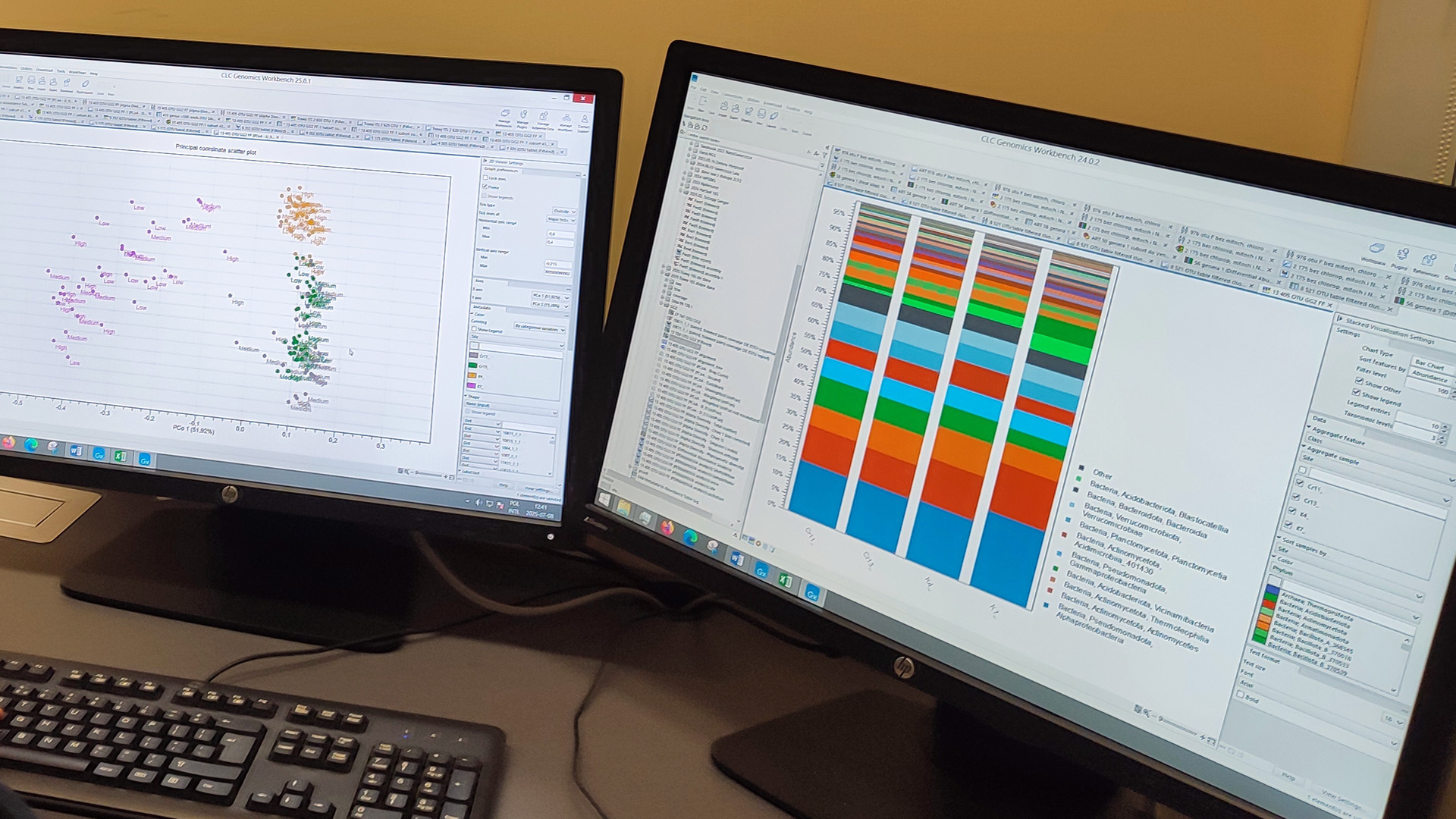As part of the ToBeLawn project, advanced research is being conducted on the impact of mowing on the diversity and functioning of soil microorganisms, which will allow for the assessment of how greenery management affects soil health. Currently, detailed analyses of microbial communities are in progress, including bacteria, fungi, and archaea. Modern gene marker sequencing techniques are being used – 16S rRNA (for prokaryotes) and the ITS region (for fungi). These methods allow precise identification of the species composition of the soil microbiome and help detect changes in its structure depending on mowing intensity and environmental pollution (e.g., road salt, heavy metals, petroleum-derived substances).
Why are soil microorganisms so important?
Although invisible to the naked eye, microorganisms form the foundation of soil ecosystems. They are responsible for:
- decomposing organic matter,
- forming humus,
- cycling nutrients (e.g., nitrogen, phosphorus),
- improving soil structure and water retention,
- protecting plants from pathogens,
- supporting plant growth and resilience to environmental stress, such as drought.
Sensitive biosensors of environmental change
Microorganisms are also extremely sensitive bioindicators of environmental changes. They respond rapidly to various forms of stress – from pollution to moisture fluctuations or disruptions in the supply of organic matter. Even small disturbances, such as frequent mowing or heavy traffic, can alter their composition and activity. For this reason, the soil microbiome enables scientists to closely monitor environmental conditions and predict future changes. Observing its diversity and function is key to understanding the health of the entire urban ecosystem.
Urban greenery from a microbiological perspective
The conclusions drawn from this research may contribute to developing more sustainable urban green space management strategies, which will not only enhance the visual appeal of public areas but, more importantly, support soil health and the resilience of urban ecosystems to climate change. Lawns that are mowed less frequently and transformed into wildflower meadows can play an important environmental role – increasing biodiversity and supporting ecosystem services such as air purification, water retention, and reducing urban heat islands.
